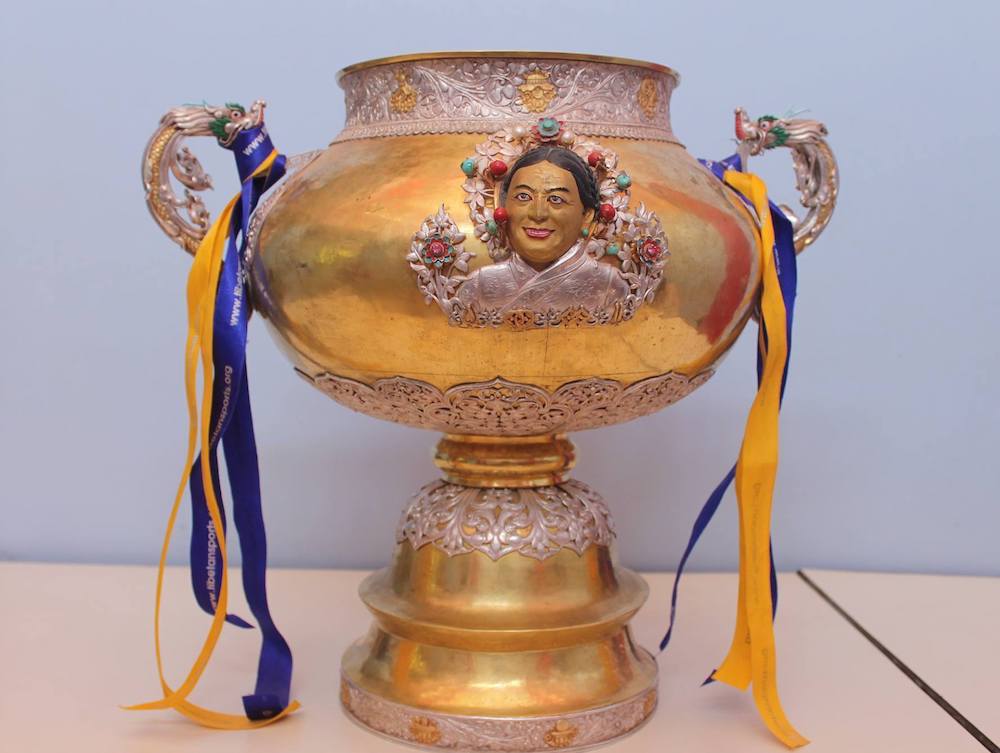By Ty Burr,
Globe Staff
“Tibet: Cry of the Snow Lion” doesn’t pretend to be objective. It’s less a documentary than a cry of outrage — a series of exotic images that slowly turn horrifying. The focus is the Chinese occupation of Tibet, but the larger subject is the intentional murder of a culture. Co-producers Maria Florio and Victoria Mudd won a 1986 feature documentary Oscar for “Broken Rainbow,” about the US government’s treatment of the Navajo in the 1970s, and their new film is of a similar piece. The only difference is that here the scope and the stakes are larger, and the tactics far more brutal.
“Snow Lion” drops us into the middle of the story, an approach that stresses emotional punch over historical orientation. The September 1987 Lhasa demonstrations were witnessed by two US tourists, Blake Kerr and John Ackerly, who give firsthand testimony of the violent repression that ensued (Kerr, a doctor, had a young boy die in his arms). Photos of the chaotic scene are devastating enough; the filmmakers don’t really need to run a soundtrack of crowd screams underneath.
“Cry of the Snow Lion” does eventually back up to give the long view, bringing in Buddhist scholar Robert Thurman (Uma’s dad, for what it’s worth) to lay out the process by which Tibet turned from a country of warrior kings to a singular theocracy 1,200 years ago. Writer John Avedon, scholar John Major, and former US ambassador to the UN Jeane Kirkpatrick describe China’s incursions into the region following the 1949 Revolution. Two key points are made: That, by dint of geography, Tibet is crucial to maintaining China’s control of the Asian continent, and that the concept of “liberation” means vastly different things in the context of Tibetan Buddhism and Chinese Communism.
Thus Chinese party leaders can insist they are freeing the Tibetan people from religious dogma when they destroy temples, forcibly relocate monks (when they’re not murdering them) and support the influx of Chinese civilians, soldiers, and businessmen into the territory. And thus the Dalai Lama knew he had to flee his own country in 1959 as soon as Mao Zedong told him that “religion is poison.”
The Dalai Lama is interviewed here, and his gentle embrace of his persecutors is both heartening and, for non-divine sorts, frustrating. “Cry of the Snow Lion” gently probes the limits of passive resistance — we hear from young Tibetans itching to fight back — but it’s more content to trot out litanies of injustices. Monks tell of torture, and we see the photographic evidence. The 1995 disappearance of the toddler identified as the reincarnation of the Panchen Lama is discussed, as well as the Chinese government’s installation of a pretender. The wholesale rebuilding of Lhasa into a Chinese city is shown. So is the capital’s brand-spanking-new red light district.
As tragic as all this is, there’s a sense of preaching to the converted that extends to the overfamiliar use of Martin Sheen as a narrator and to the de rigueur bogeyman shots of George W. Bush toward the end. The point — that the US government is currently too committed to doing business with China to protest human rights violations in Tibet — is a perfectly good one. It’s the target that’s too divisive and too easy. “Cry of the Snow Lion” succeeds in making a viewer want to do more, but it’s scattershot enough to make you want to know more too.
Ty Burr can be reached at tburr@globe.com.









